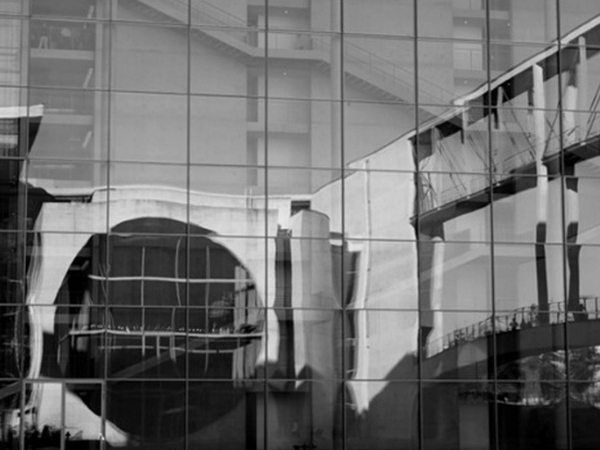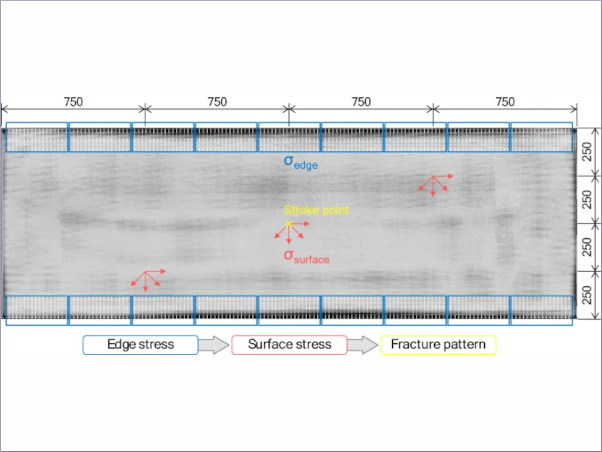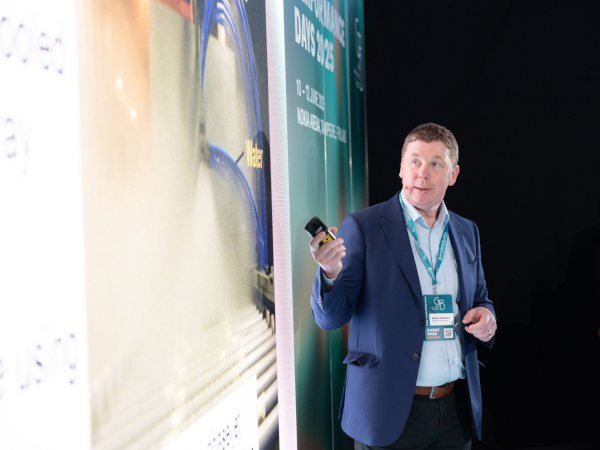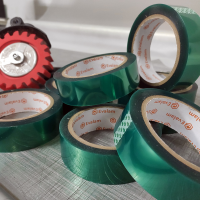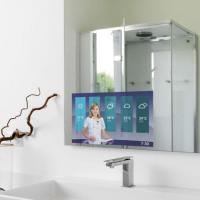In many cases, it seems one guess is as good as another. Only time will prove which theory was correct. When it comes to fire-rated glazing, however, there are some fairly safe bets as to what the future holds. By examining the latest trends in the industry, we can offer some fairly reliable forecasts about what lies ahead.
Prediction #1: Advanced Products
For example, based on the last two decades, we can conjecture that new product development will continue to redefine what is categorized as fire-rated glass.
Twenty years ago, the process of choosing a fire-rated product was simple: Ask for wired glass. It was the only glass that met the code requirements. In fact, it defined the codes, because there was no other alternative. Fire officials, architects and glaziers all knew exactly what to expect from polished wired glass.
But much has changed in twenty years. Today, there are many products on the market besides wired glass. The introduction of different materials such as ceramics, intumescents, special films, coatings and laminates has literally exploded the field of fire-rated glass. Not only are there products that surpass the fire protection of wired glass, they can also offer:
* high impact safety ( CPSC 16CFR1201, Cat. II)
* sound reduction
* design potential (etching, sandblasting)
* privacy (obscured surfaces)
* one-way visibility (mirrored)
* energy efficiency (insulated units with Low-E and/or argon)
* heat transfer resistance
Architects can find a product that specifically meets a unique combination of requirements. With the advancement of manufacturing technology, such developments can only be expected to continue well into the future.
Prediction #2: Greater Caution
As exciting as all the new possibilities are, they do mean paying closer attention to product selection and installation. In the new generation of fire-rated glass, no two products are exactly the same. They don’t all carry the same ratings. They don’t all offer the same characteristics. And they can’t all be installed in the same sizes. Generically specifying "fire-rated glass" will no longer suffice: Architects and glaziers need to familiarize themselves with the differences between the options.
For instance, one relatively new tempered product on the market claims a 60 minute fire rating. To the casual observer, it would seem to be comparable to other 60 minute products, such as ceramics. However, the tempered product cannot withstand the hose stream test - a mandatory requirement of 60 minute test standards. Should water from a sprinkler or fire hose come in contact with the tempered glass while it is hot from a fire (well under 60 minutes), the product may shatter and fall out of the frame, leaving no protection at all.
What’s more, the tempered glass product has a coating on one side which must face the anticipated direction of the fire. Since no one knows when or where a fire may strike, relying on such a product may be questionable. So as you can see, all parties involved in specifying and installing fire-rated glazing must examine all the pros and cons of each product before making a selection.
This extra degree of caution is critical for life safety and for avoiding liability as well. In case after case across the country, it is becoming evident that everyone involved in the design and construction process will be held responsible for any mistakes that are made. Rather than simply looking for the lowest quote, glaziers can provide an invaluable service to architects and general contractors by questioning specifications they feel may not be appropriate. A little caution up front may save costly legal battles down the road.
Prediction #3: Stricter Codes
With the dawn of the new millennium, code requirements across the country are being standardized and updated to conform with international guidelines. The goal is to have a universal system, so that whether you’re in a city such as Seattle or Chicago or Miami, you’ll be meeting the same codes. The processes are now underway to make this vision a reality in the near future.
In all likelihood, what that will mean for fire codes is that the more stringent guidelines will be adopted as the benchmark. As an example, the hose stream test mentioned earlier has been a requirement nationally for glass to earn a rating of 45 minutes or greater. In 1998, the Southern Building Code Congress International (the governing body for building codes in Southeastern United States), voted to make the hose stream test mandatory for all fire-rated glass in their jurisdiction - whatever the rating. Since this is also the policy of our neighbors in Canada, it is probably safe to assume that the change will become national in 2000. Products currently on the market that cannot pass the hose stream test could see their fire-rated status in jeopardy should such a change occur.
Codes will continue to demand higher levels of product performance as new technology makes it possible for glass to comply. At the same time, codes are becoming less restrictive regarding the size of the glass allowed. While 1,296 square inches used to be the maximum fire-rated glass lite, new products on the market have proven that they can perform just as well in much larger sizes, and the codes have adapted accordingly.
Prediction #4: Increased Redundancies
You may have noticed the news stories in the past year regarding sprinkler failures. It turns out that one of the most popular sprinkler systems has had a failure rate of close to 40%. That means that millions of defective sprinklers will need to be replaced or repaired. The situation has made clear the danger of relying exclusively on sprinkler systems for fire protection.
You may not have heard that the same sprinkler company has also tested what they call a "deluge" sprinkler system, specifically designed to bathe window glass in the event of a fire and eliminate the need for any type of fire-rated glass in the opening. In theory, it sounds good: Keep glass cool with water, and it will stay in place. But in real life, such a heavy dependence on sprinklers could pose a serious threat to safety.
There are several reasons for this. First, if sprinklers do not activate quickly enough, ordinary glass will shatter as soon as the water touches it, leaving no protection in the opening at all. Secondly, in order to work properly, the sprinklers have to bathe the glass entirely and evenly. Any drapes, blinds or objects that interfere with the water will cause system failure. Finally, since sprinklers are "active" systems, they require a number of factors to operate smoothly. If for whatever reason they don’t activate, regular tempered glass will not offer the necessary protection.
This does not mean sprinklers are bad – they’re very good. They regularly save lives. But they should be used in conjunction with fire-rated glass - not in place of it. Fire code officials will tell you their are three types of fire protection: Detection, suppression and compartmentation. The best safety measures include all three, providing a certain amount of redundancy. Sprinklers can help with suppression, but they do nothing for compartmentation, which is the job of fire-rated glass. Future safety efforts will emphasize the need for comprehensive fire protection that doesn’t depend solely on one particular element.
What do all these predictions mean? Here are some practical suggestions.
1. Develop a relationship with reputable sources in the fire-rated glass industry.
Unless you spend all your time studying the latest products and code developments, it’s difficult to keep track of the constant changes that are happening. However, a five minute phone call to an industry specialist can save you hours of searching on your own. There are also tools and web sites available that let you compare a broad range of products side by side.
2. Exercise your responsibility as an expert.
You may be one of the last defenses against a poor specification. As stated earlier, you can make yourself an indispensable ally to architects by pointing out questionable product choices and recommending viable alternatives.
3. Be future-minded.
Never assume that what you knew about fire-rated glazing yesterday will be the same tomorrow. Always ask a manufacturer for the latest product listings and literature before finalizing any order.
No one can say for certain what tomorrow will hold - whether you’re talking about computers crashing or fire-rated glass. But by keeping a wary eye on all the developments, you’ll be better prepared for whatever the future may bring.
About the author:
Jerry Razwick is founder and president of Technical Glass Products (TGP), a distributor of specialty glass and framing as well as architectural products. He has been a glass factory agent in foreign and domestic markets for over 25 years. Mr. Razwick has served on the Industry Advisory Committee for Underwriters Laboratories, Inc. and is an active member of AIA, CSI, NGA and GANA




